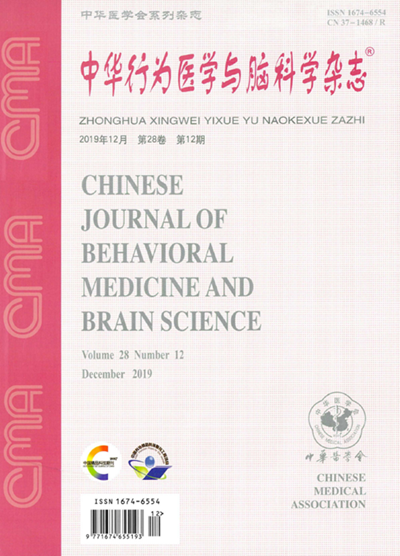The validity of different multiple comparison correction methods in the analysis of brain function image data
引用次数: 0
Abstract
Objective To explore the effectiveness of different multiple comparisons correction methods by comparing the detection rate and false positive rate of brain activation analysis using functional magnetic resonance imaging (fMRI) data. Methods On the basis of task-based fMRI dataset (including low-intensity and high-intensity stimuli condition, n=20) and resting-state fMRI dataset(n=32), brain activation results were corrected by multiple comparsion correction methods in SPM and SnPM13 software, and the activation detection rate and false positive rate were compared with different correction methods. Results Voxel-or peak-based correction methods had relatively low false positive rate.When P<0.05 after correction, the proportion of the subjects with false-positive were 0.19 and 0.16, and the number of false-positive voxels were 404 and 2 448, respectively.But the two methods had low detection rate, which were more suitable for detecting strong activation.While cluster-based correction methods had relative high detection rate and high false positive rate.When P<0.05 after correction, the proportion of the subjects with false-positive were 0.34 and 0.38, and the number of false-positive voxels were 7 870 and 8 320, respectively.And thus they were more suitable for detecting weak activation. Group-level analysis could effectively reduce false positive rate. Conclusion In practice, researchers should choose a suitable correction method based on their specific research objectives and data to achieve a balance between the detection rate and false positive rate. Key words: fMRI; Brain activation; Multiple comparisons correction; False positive rate; Detection rate不同多重比较校正方法在脑功能图像数据分析中的有效性
目的通过比较功能磁共振成像(fMRI)数据大脑激活分析的检出率和假阳性率,探讨不同多重比较校正方法的有效性。方法在基于任务的功能磁共振成像数据集(包括低强度和高强度刺激条件,n=20)和静息状态功能磁共振图像数据集(n=32)的基础上,采用SPM和SnPM13软件中的多种比较校正方法对脑激活结果进行校正,并比较不同校正方法的激活检出率和假阳性率。结果体素或基于峰值的校正方法的假阳性率相对较低。当校正后P<0.05时,假阳性受试者的比例分别为0.19和0.16,假阳性体素的数量分别为404和2448。但这两种方法的检出率较低,更适合于检测强激活。而基于聚类的校正方法具有相对较高的检测率和较高的假阳性率。当校正后P<0.05时,假阳性受试者的比例分别为0.34和0.38,假阳性体素的数量分别为7 870和8 320。因此,它们更适合于检测弱激活。群体水平分析能有效降低假阳性率。结论在实践中,研究人员应根据自己的具体研究目标和数据选择合适的校正方法,以实现检测率和假阳性率之间的平衡。关键词:功能磁共振成像;大脑激活;多重比较校正;假阳性率;检测率
本文章由计算机程序翻译,如有差异,请以英文原文为准。
求助全文
约1分钟内获得全文
求助全文
来源期刊
自引率
0.00%
发文量
8131
期刊介绍:
"Chinese Journal of Behavioral Medicine and Brain Science" (CN 37-1468/R, ISSN 1674-6554) is a national academic journal under the supervision of the National Health Commission, sponsored by the Chinese Medical Association and Jining Medical College. The journal was founded in June 1992 and was formerly known as "Chinese Journal of Behavioral Medicine" (1992-1993) and "Chinese Behavioral Medical Science" (1994-2008). In 2009, it was renamed "Chinese Journal of Behavioral Medicine and Brain Science" with the approval of the State Administration of Press, Publication, Radio, Film and Television.
The purpose of "Chinese Journal of Behavioral Medicine and Brain Science" is to implement the health and health policies of the Party and the State, implement the principle of combining theory with practice and popularization and improvement, and reflect the major progress in the theory and practical application of behavioral medicine and brain science in my country. It publishes academic papers and scientific research results in the field of behavioral medicine and brain science in my country, and has columns such as monographs/reviews, basic research, clinical research, health prevention, methods and techniques, psychological behavior and evaluation, and systematic evaluation.

 求助内容:
求助内容: 应助结果提醒方式:
应助结果提醒方式:


